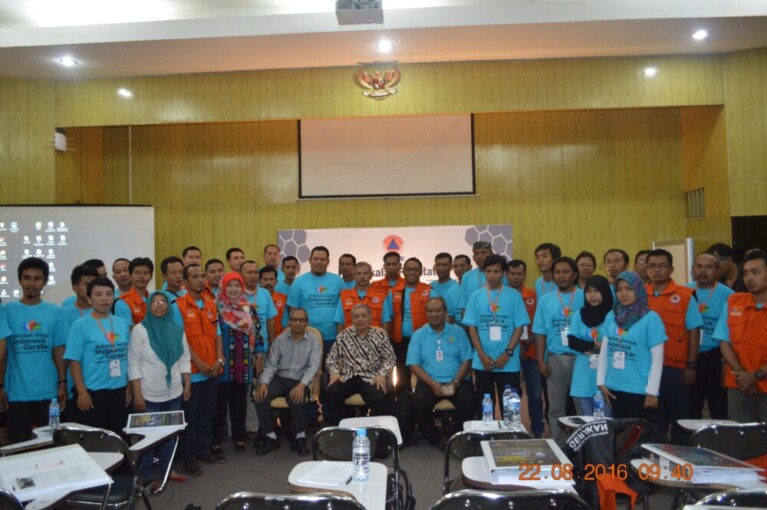
Most of the areas in Indonesia are not fully free from disaster risks. Disaster mitigation is a problem to be resolved by multi-sectors because it also relates to poverty, disability, and environment issues.
To respond to this matter, the National Disaster Mitigation Agency in cooperation with universities, including Universitas Gadjah Mada, has run National River School which is to produce good and clean rivers.
“The fact is that almost 500 regencies/municipalities are not free from disaster threats, whether it’s flooding, earthquakes, volcanic eruptions, etc,” said Lilik Kurniawan, S.T., M.Si, Director of Disaster Risk Reduction of the Agency on the sidelines of the coaching to facilitators for the River School at UGM’s Vocational School on Monday (22/8).
Lilik Kurniawan highlighted the fact that Indonesia has up to 12 threats of disaster. As such, the Agency hopes every leader of the country to be supportive to disaster mitigation.
“River School education is a matter of culture. We have the aim to change the culture so that the society would respect the river, remember we live because of the water,” he added.
According to Lilik, rivers can be used as a place to educate the society to improve quality of life. So, the management of rivers not only lies in the hands of the government but also the people. Lilik added the River School would form river volunteers. The Agency has targeted up to 1,000 volunteers in each regency/municipality.
UGM Vice-Rector for Research and Community Service, Prof. Dr. Suratman, said the River School is the first ever in the world, preceding the 17 programs of Sustainable Development Goals (SDGs).
He said it was urgent to run the River School to respond to the needs of the society, because Indonesia is facing water crisis that will also impact food and energy provision, and others.
“This school is born at the right moment when Indonesia is facing water crisis threats. To resolve this, we need to take into account five points of river uses, which are to give life, to make healthy, to be good and clean rivers, to be powerful, and to be sustainable rivers,” he said.


